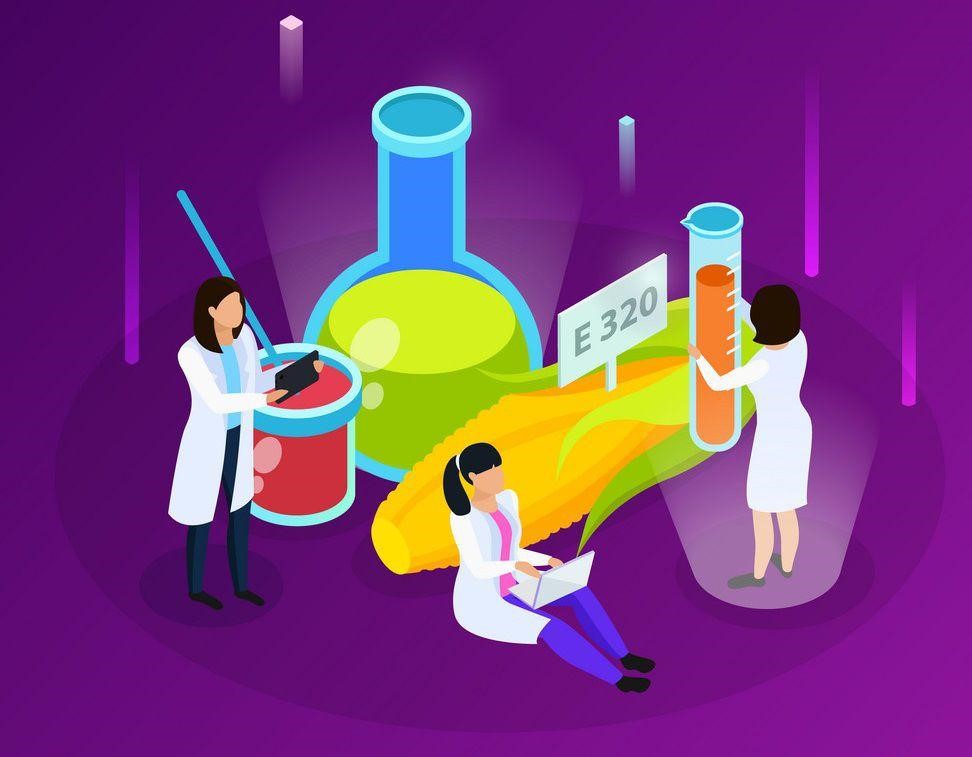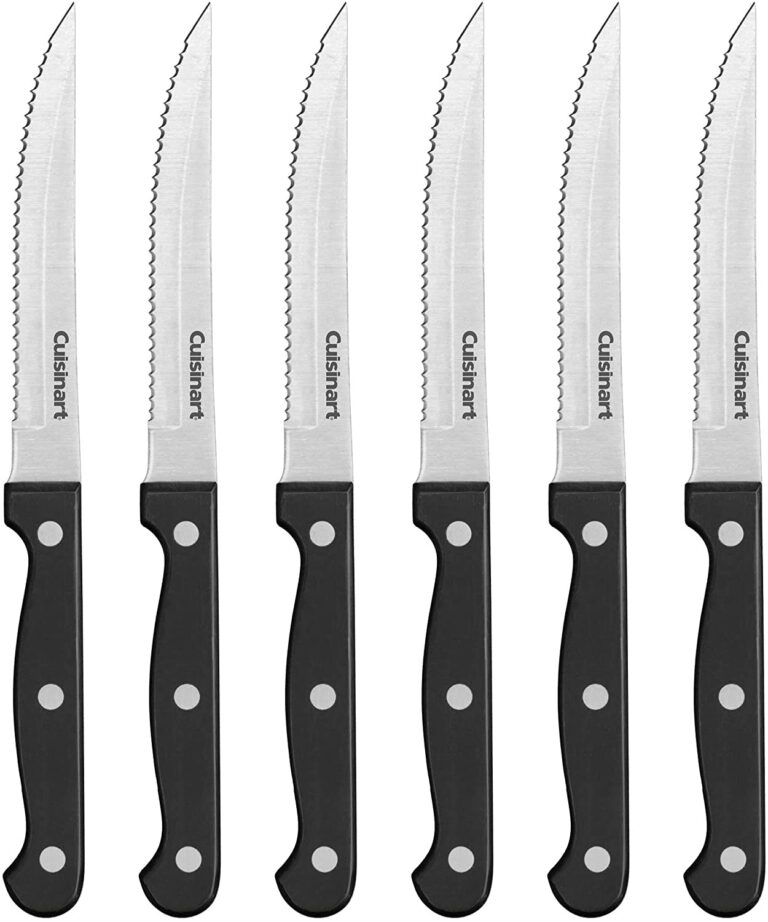This blog has been developed in recognition of the growing number of criminal incidents involving food fraud, the threats from potential food terrorism, and the need for food defense measures to protect the global food supply chain.
Building on the previous edition of this blog, there is recognition of similarity in the management and control procedures for these threats and those that have been used for decades to control the hazards necessary to assure food safety.
Throughout the 20th century, a great deal of research was conducted to enhance the stability and safety of food products. As a matter of course, those efforts focussed almost exclusively on the prevention or retardation of food spoilage, the control of an ever-increasing array of microbial pathogens, and preventing the accidental introduction of toxic chemicals and hazardous foreign materials.
Whilst continued research is necessary to better control microbial and chemical agents in the food supply chain, new threats have arisen in the past several decades because of human actions.

Essential Definitions
Food fraud deliberately placing food on the market, for financial gain, with the intention of deceiving the consumer (Elliott Review (HM Government 2014)).
Food fraud A dishonest act or omission, relating to the production or supply of food, which is intended for personal gain or to cause loss to another party (National Food Crime Unit [NFCU] no date).
Food Terrorism
Food terrorism is defined as an act or threat of deliberate contamination of food for human consumption with chemical, biological, or radio-nuclear agents for the purpose of
causing injury or death to civilian populations or disrupting social, economic or political stability (World Health Organisation [WHO] 2003)
The key differences between food terrorism and food fraud/crime relate to the intent of the contamination. Both are deliberate acts; but food terrorism is intended to harm consumers or disrupt political stability, whereas food fraud/crime is intended for financial gain.
Food Defence
Food defense (North America: food defense) is generally thought of as a set of counter-measures directed towards intentional contamination of the food supply chain. A widely accepted definition of food defense is:
The effort to protect food from intentional acts of adulteration where there is an intent to cause wide-scale public health harm.
Several other definitions of food defense have been proposed by different groups and are included here:
Procedures adopted to assure the security of food and drink and their supply chains from malicious and ideologically motivated attack leading to contamination or supply disruption (British Standards Institute.
The collective term used to describe activities associated with protecting the nation’s food supply from deliberate or intentional acts of contamination or tampering.
The process to ensure the security of food and drink and their supply chains from all forms of intentional malicious attack including ideologically motivated attack leading to contamination or supply failure (Global Food Safety Initiative.
Having a system in place to prevent, protect, respond and recover from the intentional introduction of contaminants into our nation’s food supply designed specifically to cause negative public health, psychological and/or economic consequences.
Common in all these definitions of food defense is the concept of deliberate or intentional acts, and this helps us to see the difference between food safety management systems, which are directed towards natural or accidental contamination with food safety hazards, and food defense systems, which are geared towards protecting from intentional acts of harmful contamination.
The Food Fraud Problem
As outlined, food fraud is the deliberate adulteration or misrepresentation of foods or food ingredients for economic gain. Fraudulent tactics can include dilution, substitution, origin masking, concealment, mislabelling, counterfeiting, or the addition of an unapproved additive or enhancement.
The goal of food fraud is to make money; the perpetrators do not (normally) intend to cause illnesses or deaths in consumers. However, they can make mistakes and are unlikely to be thinking about food safety measures when planning and participating in this criminal activity.

Over the years, food fraud incidents have resulted in numerous illnesses and deaths in consumers – human and animal.
The Grocery Manufacturers of America (GMA) and Thesis Scientist estimated that food fraud might be costing the global food industry between $ 10 and $15 billion a year, affecting approximately 10% of all commercially sold food products.
Learning from Examples of Food Fraud
Food fraud is not new but has occurred in various forms for hundreds of years. Throughout history beer and milk have been watered down, staples like flour have been adulterated with chalk, and spices with dust and nutshells.
Food fraud was a significant and widespread problem through the 19th and early 20th centuries and was a key reason for much early food legislation. In more recent years from the late 20th through to the early 21st centuries, several high-profile and significant incidents have brought focus once again on the food fraud problem.
The examples shown in the table highlight that, although not the initial intent of the fraudsters, food fraud can pose a significant public health risk, and this is a key consideration on top of the financial and reputational risks to the food supply chain.
Recipe Adulteration (ingredient substitution and recipe changes)
Often this type of fraud relates to replacing expensive ingredients with inexpensive fakes. There have been multiple incidents in which apple pieces were dyed blue or red to mimic the more expensive blueberries or cherries. Similarly, it has been reported that pomegranate juice has often been diluted or faked.
More seriously, substitution of less expensive peanuts for other nuts such as pine nuts and hazelnuts has occurred on a number of occasions and this produces a double jeopardy – food fraud, with the additional hazard of allergenic reactions to the peanuts. There are many other examples in this category, including not only the fairly well-known substitution of ground cumin spice with ground peanut hulls, which had significant food safety implications, but also other spices as these are often expensive and frequently targeted for EMA activities; black pepper, turmeric, chili powder, and saffron have all been reported as being prone.
Other well-known examples include the addition of ethylene glycol (anti-freeze) to wine with potential toxic effects and addition of methanol to various alcohol products, which has been responsible for consumer deaths.
Appearance Concealment
This category often relates to practices to continue using products that are past their best (e.g. putting moldy pumpkins into a blending machine for blending pumpkin pie mix where the mold will not be noticed). Poultry injected with hormones to conceal disease and benign or harmful food coloring applied to fresh fruit to cover defects are further examples. The addition of Sudan Red to spices was also aiming to suggest freshness of the spices concerned and conceal the age or poorer quality.
Mislabelling
Country of origin labelling is another area where food fraud is apparent. Origin labeling for honey has been undermined by ultrafiltration to remove the pollen that is a natural constituent. The variable types of pollen in honey can be used to identify the country of origin. This filtration practice has also been used by fraudsters in countries that want to disguise the presence of antibiotics in their honey, so that their honey can be shipped in bulk to a country that does not use antibiotics or other adulterants and be packaged and labeled as a product of that intermediary country before shipment to its final destination.
However, the labeling problem with honey is not purely related to country of origin and problems are seen with general honey products being labeled as specific flower type honey. A well-known labeling issue relates to the premium Manuka honey from New Zealand, where the amount of ‘Manuka honey’ traded globally is far in excess of the amount actually being produced.
Country- and region-of-origin labeling fraud also relates to many other product types (e.g. Greenhouse peppers grown in Mexico have been shipped to Canada and labeled as ‘Product of Canada’ after the ‘Product of Mexico’ labels had been removed).
Counterfeiting
Many of the examples already discussed could also be classed as counterfeit. There are no fixed rules here with regards to how to think about these activities. Generally, counterfeit foods are cheaper products which are made or labeled to look like more expensive brands.
Decanting of cheap wine into labels associated with higher-priced wines, lower-grade olive oils sold as extra virgin, and nonorganic products repacked as organic. In some instances, a counterfeit operation will copy labels from the expensive brands and repackage goods themselves.
Grey Market Production, Theft, and Diversion
Individuals and corporations have enhanced profits by short-weighting packaged food products, particularly dried foods. Weight-control legislation varies around the world but often means that packages are typically overfilled to avoid underweight packages and the possibility of regulatory fines.
However, fraudulent businesses and managers sometimes underfill packaged products by a relatively small amount, meaning that they can increase profits substantially over a large batch and are prepared to risk the chance of being caught for selling the underweight product.
Further examples of fraudulent practices in this category often relate to the sale of an excess unreported product that has been diverted at manufacturing or resale of products intended for one market in another (often but not always with some form of relabelling).
Condemned foods that were intended to be buried in landfills have also been diverted by truck drivers and other criminals and sold on street corners or to merchants or restaurants who think they are getting a bargain.
In addition to these types of food fraud directly affecting the product, it is also necessary to consider other types of criminal activity within food companies that could have an impact on products, food safety, and the consumer. These include deliberate actions by staff and management that affect issues around the production process (e.g. fraudulent hygiene records) and are often an indicator of poor food safety culture.
These types of activities don’t precisely fit the definitions of food fraud listed previously but instead are part of the wider food crime problem.
Examples include shopping for testing laboratories that will report negative pathogen results, no matter what the actual tests might have shown – in this case, both personnel from the food manufacturer and, potentially, the laboratory, could be complicit in the crime.
Alternatively, repeating microbiological tests (e.g. for Salmonella spp.) until a negative presumptive test is obtained is a further related example, as is deliberately generating negative environmental swab results (e.g. by swabbing an area covered in sanitizer solution).
Sometimes these types of issues are related to internal incentive programmes that are based on negative test results, showing the importance of understanding the culture and human behavior when developing key performance indicators. All of these are real examples of practices that are known to have occurred.
These examples are most certainly a miniscule portion of similar incidents that must occur each year, without detection, in food-production facilities around the world. Given the many thousands of ingredient suppliers, food processing and distribution facilities, and the massive network of global food trade, it is difficult to reliably detect economically motivated food fraud.
The detection and prevention of such fraud are even more unlikely when company managers are directly involved in fraudulent practices.
The UK’s Food Standards Agency has created a National Food Crime Unit. Any person with a suspicion about a particular food can contact this unit, Food Crime Confidential, by phone or e-mail, which acts to protect citizens from criminal activity that may affect the safety and quality of their food and beverages.
Special attention is given to foods and beverages that may have been adulterated or substituted, to production and labeling procedures that appear to be substandard or illegal, and to companies that make specific health claims that are suspected to be fake (Food Standards Agency 2016. Effective whistle-blowing practices like these will be necessary for the fight against food fraud.
Food Terrorism
Thankfully less well-known than food fraud, food terrorism, in which food items have been deliberately contaminated to cause harm to consumers and/or for political gain, has happened in recent years.
It is also conceivable that those who commit economic adulteration without physically harming consumers could easily modify their tactics to cause deliberate harm and public fear. Therefore, we must be prepared to think the unthinkable to understand the potential contamination modes.
Food Terrorism Examples
Such a terrorist plot may have been planned in Chicago in 1982, when someone contaminated bottles of Tylenol, a very popular pain reliever, with cyanide. Seven persons died. Although not a food product, there are obvious similarities in the production and packaging of consumer medicines.
To this date, the perpetrator(s) have not been identified. In contrast, in the early days of modern food safety, some food scientists and packaging engineers were concerned about the potential for product spoilage or human illnesses that could be caused by product tampering.
In 1971 scientists at the Best Foods Research Center in Union, New Jersey, developed and applied tamper-evident closures for its bottled products (W. H. Sperber personal communication).
Slowly, too slowly in the case of Tylenol, the food and drug manufacturers adopted modern tamper-proof and tamper-evident packages.
Of course, even these barriers to tampering are not fool-proof. Everyone involved in the production and distribution of food and drugs must be vigilant in understanding their packaged products and adopting or developing new tampering control procedures as such technologies become available.
A further well-known example of food terrorism is the contamination of salad bar foods with Salmonella Typhimurium in 1984 by the cult followers of Bhagwan Shree Rajneesh. The outbreak strain was found to be indistinguishable from a strain recovered from a laboratory at the cult’s commune in Oregon, USA.
It was found that the outbreak, which was known to have affected 751 people who dined or worked at local restaurants, had been a trial run for use of this method to impact voting in an upcoming election.
An earlier example from 1978 involved mercury being injected into Israeli oranges by a group sympathetic to the cause of oppressed Palestinian people. The contaminated batches of oranges were exported to several countries and were found in West Germany and the Netherlands, where five children had to have their stomachs pumped following consumption of some of the fruit.
The ‘Arab Revolutionary Army Palestinian Command’ group claimed responsibility, and Dutch and German governments received letters stating: ‘It is not our aim to kill the population, but to sabotage the Israel economy which is based on suppression, racial discrimination, and colonial occupation.’ It was believed that the oranges were contaminated in Europe rather than in Israel, most likely at the trading port of Rotterdam in the Netherlands (Doder 1978).
Food Defence
Food defense as we indicated previously is the term used to describe the countermeasures directed towards intentional contamination of food. In addition to the food fraud and terrorism issues already described, food defense mechanisms are also needed in cases where disgruntled employees are able and willing to disrupt a firm’s operation by theft or sabotage of ingredients, products, or production equipment.
Typically, tampering, theft, and other malfeasances in food facilities occur ‘in-house’. Expensive ingredients such as bulk chocolate chips, raisins, and nuts are prime targets for theft, and in most cases, that is what it remains. In a few cases, substitutions may be made to avoid getting caught.
Employees of the facilities commit 88% of all such disruptive actions, of which males commit 82% and females 18%. Outsiders who may be motivated by competition or religious or national factors commit the remaining 12% of the disruptive actions.

Possibilities of food tampering paled in comparison to the terroristic attacks on the United States in 2001 and more recently in other countries. The killing of more than 3000 people and the destruction of civilian and government buildings in the USA forced people to recognize that similar threats could also be directed against the many segments of the global food supply chain.
Related Articles:
US federal agencies acted quickly to study the potential threats and to provide training programmes and uniform guidelines that would enable the food industry to reduce the likelihood of direct attacks on the food supply chain, both by terrorists and by disgruntled employees.
One of this book’s authors participated in the development and presentation of two training programmes that focused on the production of dairy products and bakery products. Each programme hosted about 30 quality assurance and plant managers, took about 8 hours and was presented multiple times at locations throughout the USA.
Many participants struggled to identify potential targets inside their facilities until it was suggested that everyone ‘think like a terrorist’ to identify vulnerabilities in their operations. For example, the participants were asked to imagine that their facility had been taken over by terrorists. What would a faithful employee be able to do to disrupt operations and prevent the production and distribution of food to the terrorist group? This approach worked well with most participants.
Together with other governmental programmes, these independent training programmes worked well to heighten awareness of the manufacturing and distribution operations and how they could be better protected. Fifteen years later, there have been no documented attacks on US food -production facilities but we must never be complacent. The ‘thinking like a criminal’ mindset is now the accepted approach when undertaking a vulnerability assessment in any part of the world.
This section aims to discuss practical strategies and countermeasures to predict and prevent food fraud and food terrorism, including the assessment of vulnerability and development of control measures at all stages of the food supply chain. Effective food defense programmes will have predictive forecasting and information review elements to identify likely threats (ATKearney/GMA 2010) so that the correct selection of countermeasures can be identified.
Practical Food Defence Strategies
If September 11, 2001, awakened the United States and the world to the devastating possibilities of terrorist attacks, melamine was the trigger point which proved that economic adulteration could have global consequences – for both humans and animals.
In the United States, the FDA food defense focus has broadened to include all types of intentional adulteration – terrorist or economically motivated.
As a producer or distributor of foods (ingredients or finished products), it is a daunting task to consider broad supply chain defense mechanisms; yet over the course of the last several years in learning from failures, we have gained a better understanding of how to be better prepared in the years to come.
Technological advancement will result in additional tools but for now, here is an overview of some of the practical strategies that are being used.
Vulnerability Assessments: Raw Materials
Supply Chain Visibility: It takes some time to do but having a more detailed understanding of your supply chain through mapping can help identify the potential weak links.
Supply chains today are rarely confined to a single country, and to do this thoroughly requires an understanding of where ingredients are coming from (back to the source) and where the products are distributed to. This level of detail may not be necessary (or even practical), for every component which is why many organizations do a risk evaluation as part of their vulnerability assessment.
Hazard analysis and risk evaluation (for vulnerability assessment): This has always been thought to be a difficult area. How do you predict something that has never occurred? With advancing technology and in particular, the use of big data, as described previously (Section 13.5.1) is starting to become more mainstream, with tools are becoming available in a number of countries.
The way that these tools work in general terms is that they use existing sources of information and combine these inputs to draw intelligent conclusions. Examples of inputs are weather and likely crop failure, political situations such as strikes and unrest, natural disasters, major accidents such as at a nuclear facility, – any of which could lead to shortages and higher prices.
Other data such as the amount of a commodity produced, amount being traded, and country import data can provide an indicator of likely risk of being an EMA target.
Ease of detection: If analytical results for a contaminated food would be the same as when it is non-fraudulent, this is another indicator of vulnerability.
Vulnerability Assessments: Manufacturing or Process Environment
This is where a terrorist, disgruntled employee or even an activist may be focused. Organizations need to assess site security in terms of the ability to gain unauthorized access to the premises. A secure perimeter controlled access into the facility itself, employee and contractor controls, including screening, all need to be evaluated.
Outside organizations may target disgruntled employees so relatively minor issues should not be disregarded.
Access to the process itself should be assessed, particularly where employees work alone and unsupervised. The HACCP process flow chart can be helpfully utilized to ensure that no single step is missed out and that the entire process is assessed.
Vulnerability Control Plans
For raw materials, where possible, an analytical detection programme should be developed for materials of concern. This can act as a deterrent when a supplier knows that their materials will be scrutinized, and for the purchaser. it offers increased confidence.
Country-of-origin verification agreed on specifications, supplier audits (to the actual location), as well as ongoing incoming goods monitoring and testing are amongst the primary means of authentication. Knowing what to test for can be a challenge, but the use of historical data can be helpful as well as using the specification to identify a few key target criteria.
For premises, people, and processes, a control plan should include:
– screening of employees, contractors, and visitors.
– site security, fences, walls, and boundaries. Not all personnel on site need access to process areas. This should be controlled, too.
– control of delivery and shipping vehicles and their drivers.
– surveillance of vulnerable process areas (including the use of cameras), that is, where only one employee may be working and have access to the product stream.
– control of electronic devices. Whilst many portable devices will be company supplied, given the ownership of smartphones, many will be owned by the employees or other authorized personnel on the site. Most phones have a camera which can be used to document access areas and the information later shared externally.
– distribution controls. Knowledge of how the products are moved to storage and on through transportation networks should be used to put controls in place where needed. The same type of screening should be in place for personnel and facilities along the way.
Ongoing horizon scanning – a plan should be in place to ensure appropriate access to emerging issues and events so that the organization can continue to build history.
There are some useful tools, resources, and publications available for organizations to use. Several of these publications were utilized in putting this blog together, including Campden BRI Threat Assessment guide , the Publicly Available Specification on Defending Food and Drink – PAS96 the ATKearny/GMA publication on Consumer Product Fraud: Deterrence and Detection, the SAFE Food Fraud Vulnerability Assessment Tool and the WHO guideline,
Terrorist threats to food: guidance for establishing and strengthening prevention and response systems. Fairly recently a software programme designed to assist operators with developing personalized food defense plans was made available by the FDA and is worth evaluating: Food Defence Plan Buildes.
Another approach that had been fairly successful in the United States, and a major reason for the record of success against food terrorism to date, was the development and use by the FDA of its Food Defense Program of a Food Sector Vulnerability Assessment tool called ‘CARVER + Shock’. In brief, this tool was based on sets of attributes, parameters, and criteria.
The six attributes led to the CARVER acronym. In addition, the modified CARVER tool evaluates a seventh attribute, the combined health, economic, and psychological impacts of an attack, or the SHOCK attributes of a specific target.
ATTRIBUTES
Criticality – the measure of public health and economic impacts of an attack
Accessibility – ability to physically access and egress from the target
Recuperability – the ability of the system to recover from an attack
Vulnerability – ease of accomplishing an attack
Effect – direct loss from an attack as measured by loss in production
Recognisability – ease of identifying target
PARAMETERS
- Type of food produced, type of attack and impact – injuries or monetary
- Assembling experts to conduct an evaluation and establish parameters
- Detailed oversight of facility’s supply chain from ingredients through to finished products
- Assign scores to determine the most vulnerable targets
- Apply learnings through the development of countermeasures
CRITERIA
- Criticality – threat agents’ impact on injuries, loss of life, or economic loss
- Accessibility – ease of access to the target
- Recuperability – time for the specific system to recover productivity
- Effect – a measure of system productivity lost at a single facility
- Recognisability – the ease with which a specific target can be recognized
Development and application of CARVER + Shock over the past 15 years have led to the adoption of many requirements and facility changes that have greatly improved site security. All personnel – employees, drivers, visitors, inspectors, contractors, pesticide applicators, and so on – should be provided with secure credentials to gain access to their designated areas.
These requirements are enforced for all areas of the facilities – ingredient and packaging storage, production and packaging areas, chemical storage, loading docks, restrooms, cafeterias, offices, roofs and parking lots. The perimeter is enclosed with secure fences that also control access to the facility. Furthermore, increased mock product recalls and scheduled or unannounced audits and inspections have strengthened age-old quality control procedures.
The FDA expanded its efforts to improve food safety and food defense by advancing the Food Safety Modernization Act (FSMA), which was signed into law on January 4. The final proposed rule, issued in December 2013, is aimed at mitigation strategies to protect the food supply from a large range of threats, including that of intentional adulteration.
It applies to foreign and domestic companies that must register as food facilities with FDA as required by the Federal Food, Drug, and Cosmetic (FD&C) Act. Whilst much of FSMA is based upon the HACCP system, its supporting system of prerequisite programmes (especially good manufacturing practices), relates to the long-established CARVER + Shock programme.
This FSMA rule was the first to require that food processing facilities develop and implement food-defense plans. The Intentional Adulteration rule, 21CFR Part 121 requires FDA-registered food facilities to implement a written Food Defence Plan that would satisfy three elements: a vulnerability assessment, mitigation strategies, and mitigation management components.
A qualified individual, defined by FDA as one who has received the standardized training or is otherwise qualified through job experience, must write or oversee the preparation of a facility’s plan. The rule also requires training for employees who work at vulnerable steps in a food’s production.
In the United States, the vulnerability assessment of a food defense plan is focussed on three aspects of food defense:
The degree of physical access to the product,
The ability of an attacker, including the possibility of an inside attacker, to successfully contaminate the product, and
The potential health impact if a contaminant were added.
Conclusion
In modern food systems, we recognize the need for a broader food protection strategy. No longer is the focus just on natural and accidental contamination that is managed by food safety management systems; instead, the focus has widened to include the need to defend the global food supply chain from threats of food fraud and the potential for food terrorism.
Examples such as those described in this blog illustrate the vulnerability of the food chain to food fraud and food terrorism and highlight the need for effective preventative strategies.
Whilst it may not be possible to fully eradicate the risks, use of prediction systems, increasingly based on big data, alongside food chain vulnerability assessment and development of strong countermeasures will minimize the risk to food products and public health.
Many of the assessment and control procedures have similarities to those used in other food safety programme elements; however, the sheer breadth of focus needed to cover all issues means that vulnerability to food fraud and food terrorism will normally be done separately to development of HACCP food safety management systems.
Nevertheless, these approaches will continue to gain importance in the years to come and are already established as essential elements of the world-class food safety programme.
This Article is written by field of Data Science/big data/machine learning and Office com setup space.







